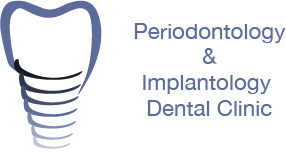Unfortunatelly implants, although metallic elements which are not at risk of caries, are at risk of infection from oral bacteria that cause periodontitis. The same periodontal pathogens can cause inflammation in the tissues surrounding the implant, such as the mucosa and bone, known as Peri-implantitis .
Peri-implantitis is a huge problem nowadays, since very often patients believe that implants do not require any maintenance at all. But this is a grave mistake. Meticulous hygiene that must be enforced every day. On a regular basis, a more thorough debridement by a dentist, using special instruments, must be performed. More information about this you can find on the pages listed in the links on the right .
Peri-implantitis can manifest as tissue swelling, pain, redness or pus discharge from the tissues surrounding the implant. Factors associated with peri-implantitis is poor oral hygiene, smoking, systemic diseases, such as uncontrolled diabetes mellitus and iatrogenic factors such as ill-fitting prosthesis that create gaps and areas where microorganisms can grow .
With the installation of peri-implantitis there is the imperative need for treatment in order to curb the inflammation and stop the destruction of tissue. This treatment may, in some very simple cases where the problem is perceived early, be very conservative like using antiseptics, improving oral hygiene and debridement of the implants. In most cases, however, the problem has progressed and has involved the underlying bone. The treatment there is much more complicated and involves a range of therapeutic interventions, as defined by international scientific protocols. Usually, the treatment is longer and requires surgical cleaning of the area to remove the inflamed tissue with special tools and a thorough debridement and decontamination of the implant itself. In some cases it may be supplemented with bone grafts in order to repair the bone damage. We must emphasise the beneficial effect of dental Lasers, since many studies have shown significant improvement in clinical and microbiological parameters by irradiating the surface of the implant with a Laser.
We need to stress that tackling Peri-implantitis is more difficult than tackling Periodontitis, since the anatomical conditions, the morphology of the implant and the difficulties in cleaning the implant surface, make the whole procedure increasingly difficult. In some cases, due to prolonged neglect, further inflammation leads to implant loss. In these cases, we try to regenerate the area of the failed implant using grafts and try to place again another implant, where this is possible .

